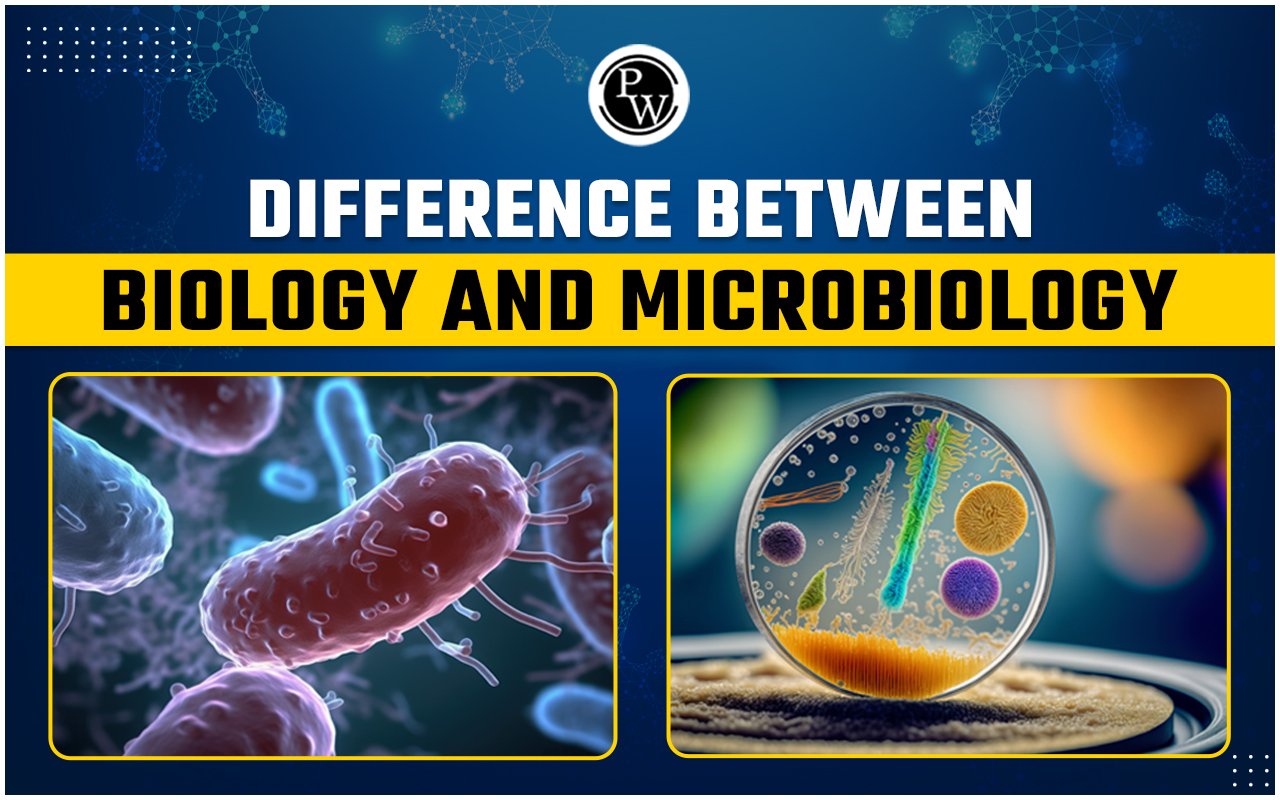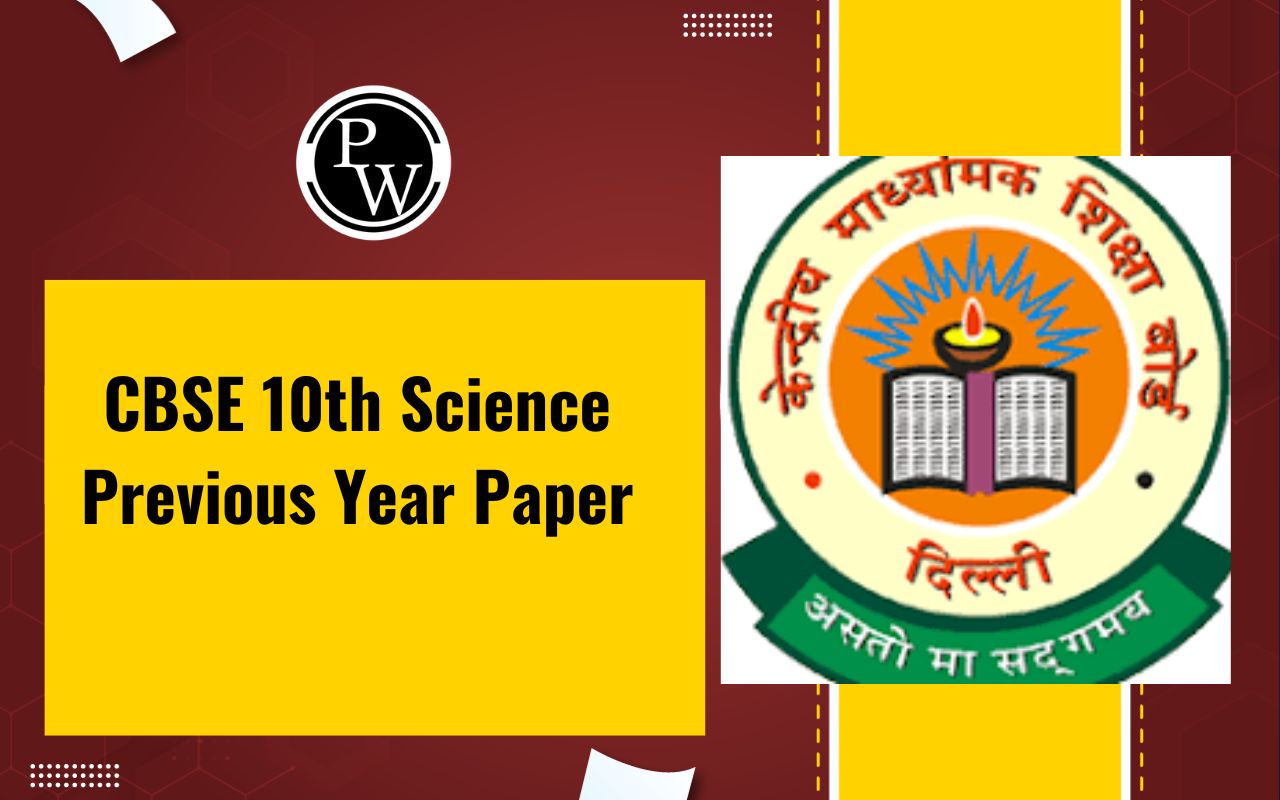

Difference Between Biology and Microbiology: Biology is a branch of science that covers all processes inside living organisms, their environment, their evolution and biological processes.
Microbiology, on the other hand, is a specific branch of biology that is concerned with living things on a microscopic scale. It involves using a microscope to study things that are too small to be seen or studied by the naked eye. It involves the study pf bacteria, viruses, microscopic plants and animals. Here we are going to discuss the differences between biology and microbiology. Sometimes it looks like they are the same, as both terms have "-ology" as their suffix, but they are not. Microbiology is a branch of biology about which we will speak further.Difference Between Aestivation And Hibernation
About Biology
The term "biology" was given by Lamarck and Teviranus in 1801. Aristotle is known as the Father of Biology. The word "biology" defines itself as it is made up of two Greek words: "bios," which means life, and "logos," which means study. So, it is the branch of science where we study living beings. Biology has mainly two branches: botany and zoology, in which we study plants in botany and animals in zoology. In biology, living organisms are studied, with different sub-branches such as physiology, anatomy, evolution, functioning, and various interactions they make with each other and the non-living environment. The biotic component in this context refers to all living creatures on earth, whereas the abiotic factor refers to all non-living elements of the environment that interact with living things. Cell biology, evolution, genetics, homeostasis, and biochemistry, are important subdivisions of biology.Difference Between Ape and Man
Principles of Biology
Modern biology is unified by four principles, according to the book "Managing Science":- All living things are composed of basic building blocks called cells. According to the cell hypothesis, all cells originate from previously existing cells.
- The idea behind gene theory is that all living things possess DNA, molecules that encode cell shapes and activities handed down through generations.
- The idea of homeostasis states that all living things strive to achieve a condition of equilibrium that allows them to live in their surroundings.
Difference Between Adaptation And Mitigation
The Different Areas of Biology
Although there are just four core ideas in biology, it covers a broad spectrum of topics divided into several domains and sub-disciplines. According to "Blackie's Dictionary of Biology", broadly speaking, biology's several divisions may be considered the study of a particular kind of creature. For instance, the study of plants, animals, and microbes is called botany, zoology, and microbiology. Many biologists specialise in studying a particular subject or issue within those more wide domains. For instance, one researcher may focus on a particular fish species' behaviour, while another investigates the neurological and chemical factors behind the behaviour. There are many branches and subdisciplines of biology, however the following is a brief overview of some of the more general disciplines included in biology:Difference Between Active And Passive Immunity
Biochemistry
The Biochemical Society defines biochemistry as the study of chemical reactions that occur in or are connected to living organisms. For instance, pharmacology is a branch of biochemistry research focusing on understanding how medications interact with body molecules.Ecology
The branch of ecology examines how living things interact with their environment. For instance, an ecologist may research how neighbouring humans influence honeybee behaviour.Genetics
Genetics is the study of heredity. Geneticists research how genes are transferred from generation to generation and how they differ among individuals. For instance, according to a 2019 review article published in Nature Reviews Genetics, researchers have discovered several genes and genetic variants that affect the human lifetime.Difference Between 70s And 80s Ribosomes
Physiology
The functioning of living things is the main topic of physiology study. All living things have physiology, which "deals with the life-supporting functions and processes of living organisms or their parts." Physiologists attempt to comprehend biological processes such as the operation and response to external stimuli of a certain organ.Microbiology
We study microorganisms like viruses, bacteria, algae, fungi, archaea, and protozoa in this area of biology. In 1674, Antoni Van Leeuwenhoek (1632–1723) used a homemade single-lens microscope to make the first observations of bacteria and other creatures in the water. Famous microbiologists like Marshall, who discovered the connection between Helicobacter pylori infection and stomach ulcers, Jenner, who developed a vaccine to prevent smallpox; Fleming, who discovered penicillin; and Zur Hausen, who uncovered the link between the papillomavirus and cervical cancer made some of the most crucial findings that have aided contemporary civilisation. Maintaining food, water, and energy security for healthy people are just a few global issues and objectives that microbiology research has played a vital role in addressing. The study of microbes will also aid in addressing important queries like "How diverse is life on Earth?" and "Does life exist elsewhere in the universe?" Microbiology has two branches: biotechnology, or applied microbiology, and pure microbiology. In pure microbiology, we study the theoretical study of the organisms as the subject itself. Whereas in applied microbiology or biotechnology, we study the application of microorganisms. Antoni Van Leeuwenhoek first saw bacteria in a homemade single-lens microscope in 1674.Differences Between Amylose and Amylopectin
Applied Microbiology
The areas of fundamental and applied microbiology can overlap, as seen in the case of genetic engineering. The employment of microbes to produce a particular good or for a specific purpose is known as applied microbiology, which is mainly what genetic engineering is thought to be. The techniques for genetic engineering were created from fundamental studies of microbial genetics. Conversely, techniques developed and employed in applied microbiology may be transformed into equipment for fundamental microbiology. However, the following categories can be used to categorise applied microbiology.Soil Microbiology
Regardless of how "dead" the soil may seem, depending on the location and soil quality, it swarms with millions or billions of microbial cells per gram. Dead plants, animal and human waste, and animals are in or on the soil. Plant roots, animals including rodents, insects, and worms, as well as a variety of microorganisms like viruses, bacteria, algae, fungus, and protozoa, make up the ecology of rich soil. Earth's natural cycles provide a simple means to show the function of this microbial flora. The nitrogen cycle is an excellent illustration of this process. It starts with microorganisms drawing atmospheric nitrogen gas and converting it into a combined form of nitrogen that plants can use as a nutrient. Next, the plant produces organic nitrogen compounds that people and animals consume. These compounds eventually reach the soil, where microorganisms complete the cycle by decomposing these compounds back into atmospheric nitrogen and simple inorganic molecules that plants can use.Nutrition Microbiology
For the following reasons, microbes are essential to food: (1) they can deteriorate food; (2) they are employed to make a wide range of food items; and (3) they can spread microbial illnesses.Genetic engineering and Commercial Microbiology
Products of microbial metabolism include a variety of compounds with significant economic significance. From an industrial perspective, the substrate may be seen as raw material, and the microbe as the "chemical factory" that transforms the raw material into new goods. It may be possible to carry out this reaction on a big industrial scale if desired criteria can be satisfied and an organism can transform inexpensive raw material into a valuable product.Microbiology in Public health care
After the germ theory of illness was established in the mid-1880s and laboratory techniques for isolating microorganisms (especially bacteria) were developed, the causes of several prevalent ailments were swiftly identified. A few common diseases and the year their causal agent was identified include anthrax (1876), gonorrhoea (1879), typhoid fever (1880), malaria (1880), TB (1882), diphtheria (1883), cholera (1884), and tetanus (1884). The creation of vaccinations, which began in the 1790s, antibiotics in the middle of the 20th century, and the worldwide eradication of smallpox by 1977 are a few of medical microbiology's most significant achievements.Pure Microbiology
Pure microbiology is an area of science that focuses on using microbes to produce goods that are valuable to humans, such as drugs, antibiotics, vaccines, enzymes, and biotechnological products. Fungi and protists are considered microorganisms because they have membrane-bound cell organelles. Eubacteria and archaebacteria are considered prokaryotic organisms because they lack membrane-bound organelles. Microbiologists have historically used microscopy, staining, and culture.Difference Between Autotrophs and Heterotrophs
Similarities between Biology and Microbiology
- Biology and microbiology are fields of science that deal with studying living organisms.
- Also, both fields study the origin, distribution, structure, functioning, and interactions of different living organisms.
Difference Between Biology and Microbiology
| Biology | Microbiology |
| 1.The branch of science deals with the study of living organisms | 1.The branch of science deals with the study of microorganisms |
| 2. The use of a Microscope is not mandatory in Biology | 2. The use of a Microscope is mandatory in Microbiology |
| 3. It includes the study of both Macroscopic and Microscopic organisms | 3. It includes the study of only Microscopic organisms |
| 4. It is more diverse | 4. It is less diverse as compared to Biology |
| 5. It is pure science | 5. It is applied biology |
| 6. The branches of biology are Botany, Zoology, Human physiology etc. | 6. The branches of Microbiology are mycology, virology etc. |
Difference Between Biology and Microbiology FAQs
Name some organisms that cause disease.
Several types of microorganisms, such as bacteria and viruses, cause diseases.
Name the biomolecules included in molecular biology.
DNA, RNA, and proteins are the main constituents of molecular biology.
Who is known as the father of biology?
For his amazing contributions to the field of biology, Aristotle is regarded as the father of biology.
Name some harmful bacteria.
Streptococcus, staphylococcus, etc., are some of the harmful bacteria.
Do microbiology and biology have some differences?
Yes, they have differences between them. Biology deals with the study of living organisms, whereas microbiology deals with the study of microorganisms.
🔥 Trending Blogs
Talk to a counsellorHave doubts? Our support team will be happy to assist you!

Free Learning Resources
PW Books
Notes (Class 10-12)
PW Study Materials
Notes (Class 6-9)
Ncert Solutions
Govt Exams
Class 6th to 12th Online Courses
Govt Job Exams Courses
UPSC Coaching
Defence Exam Coaching
Gate Exam Coaching
Other Exams
Know about Physics Wallah
Physics Wallah is an Indian edtech platform that provides accessible & comprehensive learning experiences to students from Class 6th to postgraduate level. We also provide extensive NCERT solutions, sample paper, NEET, JEE Mains, BITSAT previous year papers & more such resources to students. Physics Wallah also caters to over 3.5 million registered students and over 78 lakh+ Youtube subscribers with 4.8 rating on its app.
We Stand Out because
We provide students with intensive courses with India’s qualified & experienced faculties & mentors. PW strives to make the learning experience comprehensive and accessible for students of all sections of society. We believe in empowering every single student who couldn't dream of a good career in engineering and medical field earlier.
Our Key Focus Areas
Physics Wallah's main focus is to make the learning experience as economical as possible for all students. With our affordable courses like Lakshya, Udaan and Arjuna and many others, we have been able to provide a platform for lakhs of aspirants. From providing Chemistry, Maths, Physics formula to giving e-books of eminent authors like RD Sharma, RS Aggarwal and Lakhmir Singh, PW focuses on every single student's need for preparation.
What Makes Us Different
Physics Wallah strives to develop a comprehensive pedagogical structure for students, where they get a state-of-the-art learning experience with study material and resources. Apart from catering students preparing for JEE Mains and NEET, PW also provides study material for each state board like Uttar Pradesh, Bihar, and others
Copyright © 2025 Physicswallah Limited All rights reserved.
Get App











